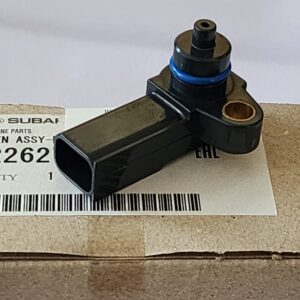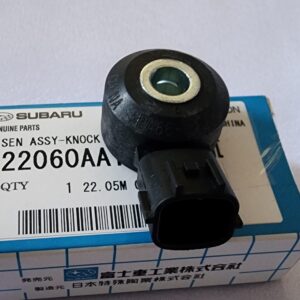Title: Cooling Precision: The Role of Coolant Temperature Sensors in Your Car
Introduction:
Under the hood of your car lies a network of sensors working diligently to ensure optimal engine performance and reliability. Among these essential components is the coolant temperature sensor, a small but critical device that plays a pivotal role in monitoring engine temperature and regulating coolant flow. In this blog, we’ll dive into the world of coolant temperature sensors, exploring their function, importance, and the ways they contribute to maintaining engine health and efficiency.
What is a Coolant Temperature Sensor?
A coolant temperature sensor, also known as an engine coolant temperature (ECT) sensor, is a specialized sensor typically located near the engine’s thermostat housing or cylinder head. Its primary function is to monitor the temperature of the engine coolant and provide feedback to the vehicle’s onboard computer or engine control module (ECM).
Functionality:
But how does a coolant temperature sensor work its magic? As the engine operates, coolant circulates through the engine’s cooling system, absorbing heat generated by combustion. The coolant temperature sensor continuously monitors the temperature of the coolant as it flows through the engine. It then generates an electrical signal proportional to the coolant temperature, which is transmitted to the vehicle’s ECM.
Importance:
The importance of coolant temperature sensors in cars cannot be overstated. These small yet crucial components play a critical role in maintaining engine temperature within safe operating limits, optimizing fuel efficiency, and preventing overheating. By providing real-time temperature data to the ECM, coolant temperature sensors enable the engine management system to adjust fuel delivery, ignition timing, and cooling fan operation to ensure optimal engine performance and reliability.
Key Functions of Coolant Temperature Sensors:
1. Engine Temperature Monitoring: The primary function of coolant temperature sensors is to monitor the temperature of the engine coolant and provide real-time temperature data to the vehicle’s ECM.
2. Fuel Mixture Adjustment: Coolant temperature sensors help the ECM adjust the air-fuel mixture based on engine temperature, optimizing fuel delivery for efficient combustion.
3. Ignition Timing Control: By monitoring coolant temperature, coolant temperature sensors allow the ECM to adjust ignition timing to prevent engine knock and improve performance.
4. Cooling Fan Operation: Coolant temperature sensors play a crucial role in controlling the operation of the engine cooling fan, activating it as needed to maintain optimal engine temperature and prevent overheating.
Maintenance and Replacement:
Proper maintenance of coolant temperature sensors is essential to ensure accurate temperature readings and reliable engine performance. Over time, coolant temperature sensors may become contaminated with dirt, debris, or coolant residue, leading to inaccurate readings or failure. Regular inspection, cleaning, and testing of coolant temperature sensors as part of routine maintenance can help prevent issues and ensure proper function. If problems arise, such as engine overheating or erratic temperature readings, professional diagnosis and replacement of the coolant temperature sensor may be necessary to restore proper operation.
Conclusion:
In conclusion, coolant temperature sensors may be small components, but their impact on engine performance and reliability is significant. By continuously monitoring engine coolant temperature and providing real-time data to the ECM, coolant temperature sensors help optimize fuel delivery, ignition timing, and cooling system operation, ensuring efficient combustion and preventing engine overheating. So, the next time you hit the road, take comfort in knowing that your engine’s coolant temperature sensor is working behind the scenes to keep your engine running smoothly and reliably.
In stock (can be backordered)
$12,851.68
Title: Cooling Precision: The Role of Coolant Temperature Sensors in Your Car
Introduction:
Under the hood of your car lies a network of sensors working diligently to ensure optimal engine performance and reliability. Among these essential components is the coolant temperature sensor, a small but critical device that plays a pivotal role in monitoring engine temperature and regulating coolant flow. In this blog, we’ll dive into the world of coolant temperature sensors, exploring their function, importance, and the ways they contribute to maintaining engine health and efficiency.
What is a Coolant Temperature Sensor?
A coolant temperature sensor, also known as an engine coolant temperature (ECT) sensor, is a specialized sensor typically located near the engine’s thermostat housing or cylinder head. Its primary function is to monitor the temperature of the engine coolant and provide feedback to the vehicle’s onboard computer or engine control module (ECM).
Functionality:
But how does a coolant temperature sensor work its magic? As the engine operates, coolant circulates through the engine’s cooling system, absorbing heat generated by combustion. The coolant temperature sensor continuously monitors the temperature of the coolant as it flows through the engine. It then generates an electrical signal proportional to the coolant temperature, which is transmitted to the vehicle’s ECM.
Importance:
The importance of coolant temperature sensors in cars cannot be overstated. These small yet crucial components play a critical role in maintaining engine temperature within safe operating limits, optimizing fuel efficiency, and preventing overheating. By providing real-time temperature data to the ECM, coolant temperature sensors enable the engine management system to adjust fuel delivery, ignition timing, and cooling fan operation to ensure optimal engine performance and reliability.
Key Functions of Coolant Temperature Sensors:
1. Engine Temperature Monitoring: The primary function of coolant temperature sensors is to monitor the temperature of the engine coolant and provide real-time temperature data to the vehicle’s ECM.
2. Fuel Mixture Adjustment: Coolant temperature sensors help the ECM adjust the air-fuel mixture based on engine temperature, optimizing fuel delivery for efficient combustion.
3. Ignition Timing Control: By monitoring coolant temperature, coolant temperature sensors allow the ECM to adjust ignition timing to prevent engine knock and improve performance.
4. Cooling Fan Operation: Coolant temperature sensors play a crucial role in controlling the operation of the engine cooling fan, activating it as needed to maintain optimal engine temperature and prevent overheating.
Maintenance and Replacement:
Proper maintenance of coolant temperature sensors is essential to ensure accurate temperature readings and reliable engine performance. Over time, coolant temperature sensors may become contaminated with dirt, debris, or coolant residue, leading to inaccurate readings or failure. Regular inspection, cleaning, and testing of coolant temperature sensors as part of routine maintenance can help prevent issues and ensure proper function. If problems arise, such as engine overheating or erratic temperature readings, professional diagnosis and replacement of the coolant temperature sensor may be necessary to restore proper operation.
Conclusion:
In conclusion, coolant temperature sensors may be small components, but their impact on engine performance and reliability is significant. By continuously monitoring engine coolant temperature and providing real-time data to the ECM, coolant temperature sensors help optimize fuel delivery, ignition timing, and cooling system operation, ensuring efficient combustion and preventing engine overheating. So, the next time you hit the road, take comfort in knowing that your engine’s coolant temperature sensor is working behind the scenes to keep your engine running smoothly and reliably.
| Warehouse | Inventory at warehouse 2 |
|---|


Get E-mail updates about our latest products and special offers.
Sensors and More is Jamaica’s ultimate online auto parts store. Established in 2020, we specialize in genuine electrical parts for Japanese, Read more…
Reviews
There are no reviews yet.